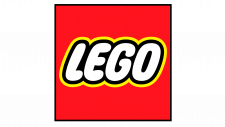AMC Theatres Logo
AMC Theatres stands as a trailblazer in the cinema world. Edward Durwood played a pivotal role in its inception, launching the brand in Kansas City, Missouri. Its creation aimed to transform movie-going into a premium experience. Initially, it introduced innovations that redefined cinema comfort and viewing technology. AMC sets trends in the entertainment industry, offering an unrivaled movie-watching adventure.
Meaning and history
AMC Theatres, founded in 1920, pioneered the multiplex model in the 1960s. Initially family-owned, it expanded rapidly. In 2004, Marquee Holdings, led by J.P. Morgan Partners, bought AMC. By 2006, AMC merged with Loews Cineplex, becoming the second-largest cinema chain. In 2012, China’s Dalian Wanda Group acquired AMC, marking significant foreign investment in the industry. AMC innovated with reserved seating and recliners, enhancing the movie-going experience. The COVID-19 pandemic in 2020 hit AMC hard, threatening its survival. It turned to novel fundraising methods, including selling shares to the public. By 2021, a surge in retail investor interest, partly fueled by social media, helped AMC avoid bankruptcy. Throughout its history, AMC’s ownership and strategies have evolved, reflecting the changing dynamics of the movie theater industry.
What is AMC Theatres?
AMC Theatres represents a leading cinema chain, renowned for its innovative approach to movie presentation. It elevates the traditional movie-going experience through state-of-the-art theaters and cutting-edge technology. AMC stands as a symbol of entertainment evolution, consistently offering audiences not just films, but memorable experiences.
1920 – 1939
The logo features “Dubinsky Bros. Stock Co.” in a classic, serif font that gives a nod to the early 20th-century aesthetics. The typeface, with its slight irregularities, resembles hand-set letterpress printing, evoking a sense of tradition and heritage. The period after “Co.” adds a definitive touch, suggesting establishment and permanence. The black ink on a plain background promotes a straightforward, no-nonsense image, indicative of a business grounded in stability and historical significance. This design reflects a time when a company’s word was its bond, and its name carried weight.
1931 – 1932
The logo presents a bold, vintage charm with its weathered black text. It reads “PUBLIX-DUBINSKY BROS.” in all caps. The font appears robust and slightly eroded, reminiscent of classic typography. It exudes a historical aura, suggesting a long-standing tradition. The hyphen connecting “PUBLIX” and “DUBINSKY” acts as a bridge between two entities. The “BROS.” at the end implies a familial foundation. This design captures a snapshot of the past, echoing times when ink and paper were primary in business identity.
1932 – 1939
In this iteration, “DUBINSKY BROS.” takes center stage, standing alone without “PUBLIX”. The text maintains its strong, antique character but seems more focused. The separation implies a shift, possibly signifying independence or a distinct identity within the same historical lineage. The period after “BROS.” punctuates the sense of establishment and solidarity among the brothers. It remains in the same aged, bold font, echoing a narrative of continuity and resilience.
1939 – 1947
Now “DURWOOD-DUBINSKY BROS.” emerges, reintroducing a name ahead of “DUBINSKY”. The hyphen connects “DURWOOD” with “DUBINSKY BROS.”, hinting at a partnership or merger. “DURWOOD” appears in the same rugged, impactful font as “DUBINSKY BROS.”, suggesting equal importance. This logo evolution reflects a narrative of expansion or collaboration, maintaining the historical essence. The enduring font style keeps the legacy alive while signaling growth.
1947 – 1968
“DURWOOD THEATRES, INC.” now displays, shedding the “DUBINSKY BROS.” component. This change signals a rebranding or corporate restructuring. The text adopts a cleaner, more uniform appearance, reflecting a modernized and perhaps more corporate direction. The inclusion of “INC.” indicates incorporation, a step towards formal business stature. The design suggests a streamlined focus on the Durwood identity within the theatrical space, emphasizing its own legacy.
1968 – 1969
This image departs entirely from the textual logos previously discussed. It features a figure holding a film reel, a universal symbol of cinema. This sculptural icon, standing on a pedestal, suggests honor and prestige, commonly associated with awards in the film industry. Its sleek, minimalist design conveys an artistic representation of film achievement. Unlike the earlier logos, which were primarily text, this emblem uses visual metaphor to celebrate cinematic artistry.
1969 – 1973
The figure, previously unbranded, now proudly stands atop the bold letters “AMC”. This inclusion of text beneath the statue integrates the cinematic symbol with a corporate identifier. The same figure holding a film reel remains, yet now it has a direct association with AMC Theatres. The logo now carries a dual message: an homage to the art of cinema and a declaration of the company’s identity. This change marks a clearer branding direction, aligning the artful representation with the AMC brand.
1973 – 1977
Encircling the familiar figure and “AMC” text is a new addition: a laurel wreath. Traditionally symbolizing victory, this element adds a layer of prestige and success to the logo. It hints at triumph in cinematic endeavors and excellence in the film exhibition field. The wreath frames the central figure, emphasizing its significance and the company’s achievements in the industry. This design choice elevates the logo, suggesting a celebration of cinematic arts and the company’s stature within that realm.
1977 – 1979
This logo marks a significant shift, focusing exclusively on the “AMC” text. The stylized letters, bold and pronounced, emerge from a dark background. The design now prioritizes brand recognition over visual metaphor, aiming for a strong, memorable identity. It’s a modern, minimalist approach, embodying the essence of AMC Theatres.
1979 – 1980

The logo is a dynamic departure, featuring “AMC” intertwined with filmstrip elements and a prominent star. Below, “AMERICAN MULTI CINEMA” is wrapped along the curved edge, anchoring the design. This artistic blend symbolizes the film industry and AMC’s place within it. The star likely represents the magic of movies, while the looping filmstrip cradles the company initials, emphasizing motion and creativity. This logo embodies a more energetic and imaginative approach, a far cry from the stark simplicity of the previous marquee-like design.
1980 – 1994
This logo presents a stark contrast to the previous design. It’s a return to simplicity: “amc” in lowercase, flowing letters, devoid of embellishment. The fluidity of the font gives a contemporary, accessible feel. There’s a departure from the complexity of stars and filmstrips to a clean, undistracted presentation. This design speaks to a modern, more refined brand identity, emphasizing approachability and a streamlined aesthetic. The minimalism suggests confidence and clarity in the brand’s role in the cinema industry.
1994 – Today
Maintaining its minimalist design, the logo transitions from black to a vivid red. This color shift injects energy and passion, evoking strong emotions. Red is often associated with excitement, a fitting choice for a cinema company. The color update makes the logo stand out more prominently, capturing attention and reinforcing AMC’s brand in the entertainment landscape. The continuity of form with a fresh burst of color symbolizes a vibrant era for AMC Theatres.






















